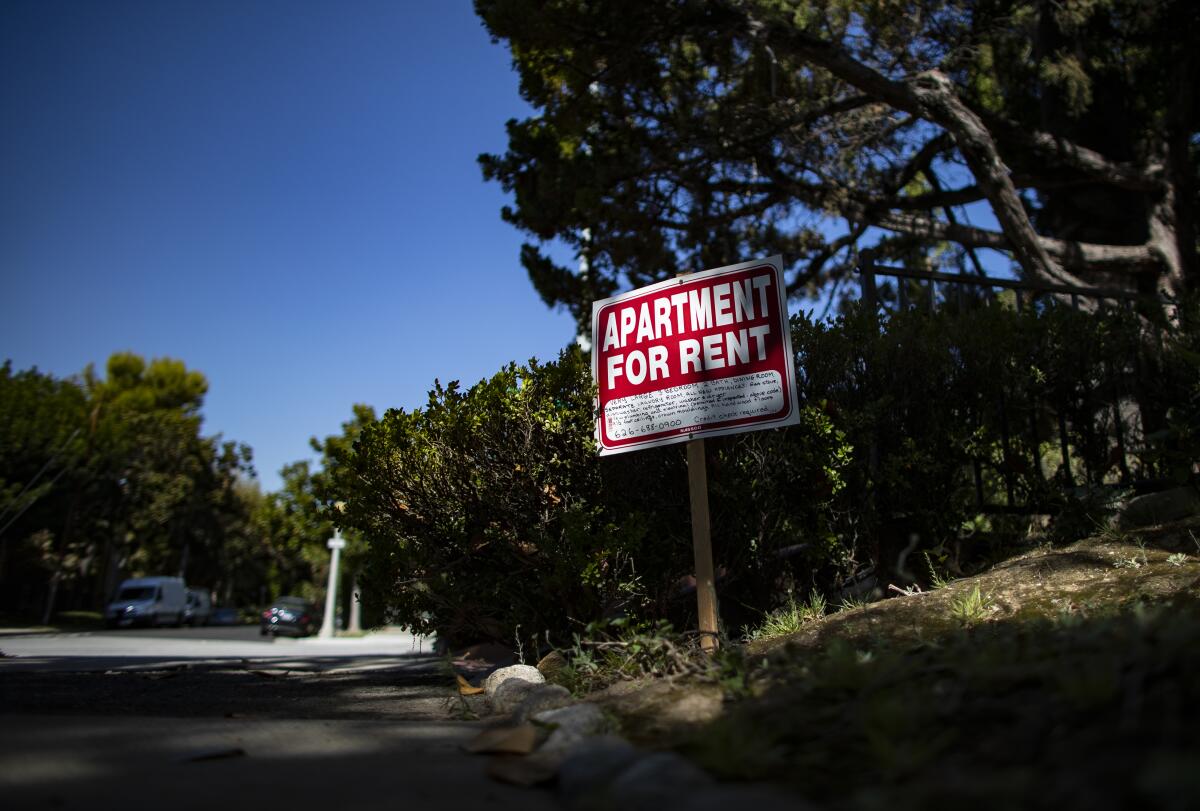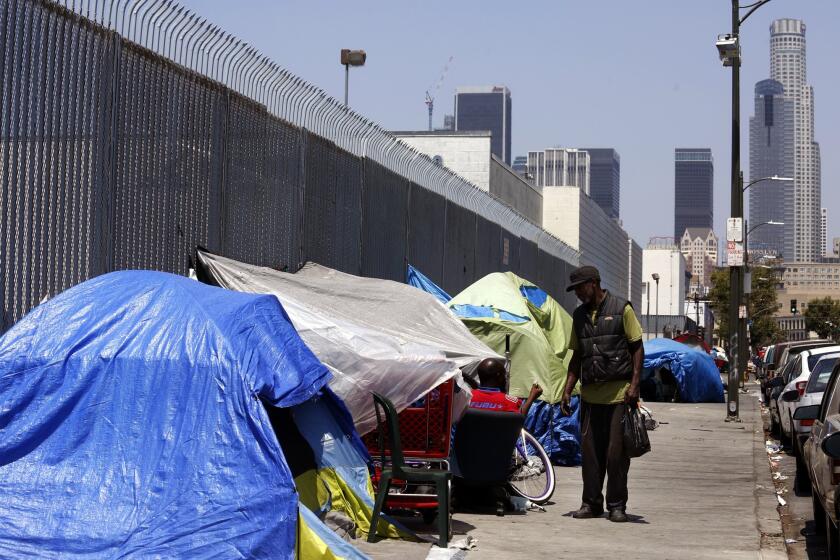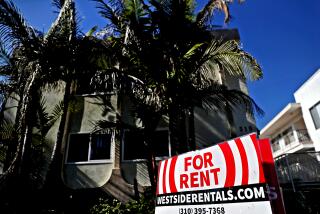Op-Ed: The COVID-19 emergency is far from over for vulnerable renters

- Share via
Since 2004, my family and I have rented one unit of a prewar duplex in Mid-City Los Angeles. It’s a building I adore, especially the accents and the details: the ziggurat motifs that top the doorways, the enclosed garden in the front. I also love the neighborhood. Over the last 17 years, I have walked and talked and let myself be known here. I have written about it as home territory. I have become part of a community.
Now, however, we might have to leave. The building is for sale, and our landlady, who has lived above us for all the time we’ve been here, is moving out. It’s possible that whoever buys it will have plans for both units that don’t include us.
I’m no rental naïf; I am familiar with the risks of non-ownership. Rentals — or so conventional wisdom insists — are by their nature temporary, right?
And yet, this apartment is where my wife and I raised our children. It is where we celebrated and we struggled, where we suffered loss, made gains, survived and thrived. It is our home.
And in a city where, according to a 2018 Zillow report, 64.1% of homes are rented, an awful lot of people must feel the same way we do.
So many rent in Los Angeles because it costs too much to buy. Housing affordability, says the California Assn. of Realtors, is the lowest since mid-2018, a year when Curbed Los Angeles reported that 75% of Angelenos couldn’t afford monthly mortgage payments “without becoming cost-burdened.”
Tenants, of course, have protections when buildings are sold. Our unit is rent-stabilized, which affords us certain options. So too, the duration of our tenancy. To force us out would cost any owner time and money. We are fully cognizant of our rights, rights the COVID-19 crisis has fortified.
Under temporary emergency orders first issued in March 2020 by Mayor Eric Garcetti, no landlord can evict a tenant for COVID-19 related nonpayment of rent in Los Angeles. Nor can landlords enact a “no-fault eviction,” which includes a property owner taking over a unit for personal or family use, or otherwise removing it from the market.
The local eviction moratorium — which is more far-reaching than similar state or federal mandates — remains in effect until June 30, and it can be extended monthly by the City Council. Even after the order expires, additional protections can slow the eviction clock.
That such regulations have been essential during the long months of pandemic lockdowns should go without saying. But now, as my family contemplates the possibility that we may lose our home, the Garcetti order seems less like an emergency and more like a longer-term necessity. Our personal housing insecurity, in other words, has brought Los Angeles’ housing insecurities ever more sharply into focus.
It’s no secret that Los Angeles is caught in a devastating homelessness crisis. More than 66,000 people in the metropolitan area are “unhoused,” according to the latest Los Angeles Homeless Services Authority data. In January, a study from the Economic Roundtable projected that the number could almost double by 2023.
The situation will only grow more catastrophic if — when — the eviction moratorium is ended because so many people have been unable to keep up with their rent.
Shelter and housing get people out of homelessness. But L.A. needs expansive programs to prevent people from becoming homeless in the first place.
Once the order is lifted, tenants will have up to 12 months to pay back rent in full. The city suggests a variety of payment options, but all are contingent on having the necessary income, which is hardly a given for the most economically vulnerable. California’s economy may rebound, but, as Susan Lund of the McKinsey Global Institute recently told the Washington Post, “there is a very real scenario in which a lot of the large-employment, low-wage jobs in retail and in food service just go away in the coming years.”
In an attempt at mitigating the rent payback problem, Congress has allocated more than $46 billion for emergency tenant assistance, but very little of it has trickled down to those who need it. In California, which is among the states hit hardest by rent delinquency, only $20 million of rent relief has so far been approved — and $1 million paid out — of the $355 million in federal funds applied for by tenants and landlords, according to the New York Times.
The problem, in part, is that rent relief isn’t something state and local governments are used to providing. Rules, applications and an apparatus for dispensing the money have to be established. And those in need have to be able to navigate the new bureaucracy.
“It’s a really convoluted process,” Shanti Singh of the California renters’ rights coalition Tenants Together told Vox late last month. “People who are most impacted by economic hardship during COVID-19, they often don’t have extensive documentation of hardships or job losses.”
June 30 is looming. I’m not arguing for free rent or an endless eviction moratorium. I understand that landlords have mortgages, property taxes and upkeep bills to pay. But if the state and other governmental entities are slow to distribute rent relief, then evictions should not begin. The emergency created by COVID-19 isn’t over.
I hope my family will be able to stay in our community and our home. The state and the city should do everything they can to help the most at-risk among us do the same.
David L. Ulin is a contributing writer to Opinion.
More to Read
A cure for the common opinion
Get thought-provoking perspectives with our weekly newsletter.
You may occasionally receive promotional content from the Los Angeles Times.











